Biblical Jonah Visits Nineveh – The Evil City
David Tee - AncientPages.com - Nineveh, the mere mention of the word may bring thoughts of evil fear to those who read about that great city. Except for one brief period where Nineveh repented in the time of Jonah, it did not serve God but served their desires.
The Ancient City Nineveh
Nineveh means 'gift of God,' but it is hard to see that meaning in the citizens' behavior and deeds throughout its history.
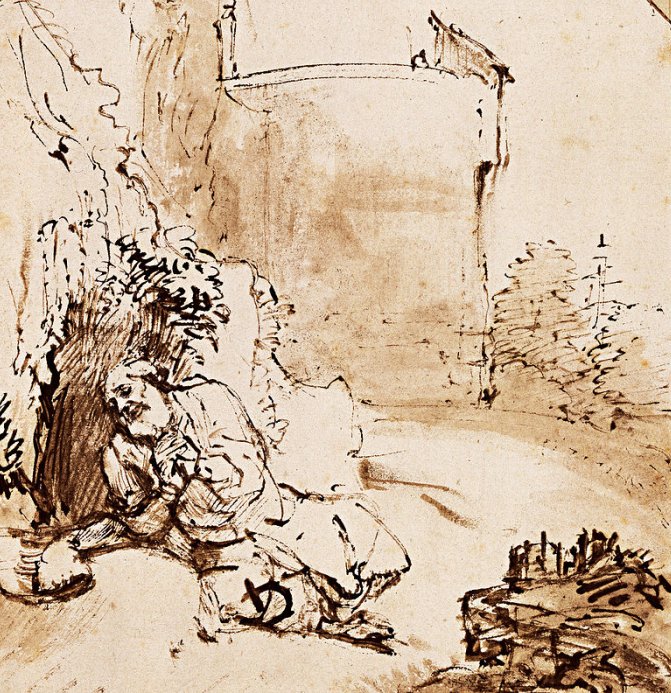
The Prophet Jonah before the Walls of Nineveh, c. 1655; Rembrandt (1606–1669) - TQHqiO_H-vrGbA at Google Cultural Institute - Public Domain
The people of Nineveh and Assyria were feared for their ruthlessness and cruel attitude.
They were also known for being the center of two trade routes. Most of Nineveh's wealth came from the trade centers located in the city. From its humble beginning in prehistory to its demise in 612 BC, the town was located on the Tigris River, just next to the modern city of Mosul.
The city's earlier Akkadian Kings, Manishtushu and Shamshi-Adad I, rebuilt earlier temples dedicated to the God of Nineveh, Ishtar. She was the goddess of war and love. It gives you the idea of why the Ninevites adopted warlike practices. The most famous king of Nineveh, Sennacherib, built himself a 70-room palace rivaling none.
Ashurbanipal, a lesser-known successor to Sennacherib, created a 22,000-volume library discovered in the 20th century. But even this good act did not stop Nineveh's final destruction 15 years later.
Nineveh's Fame
Nineveh's fame is owed to three factors:
- It was a city of war, and its warlike reputation was well earned through its numerous conquests and cruel treatment of those conquered.
 Jonah Preaching to the Ninevites (1866) by Gustave Doré. Public Domain
Jonah Preaching to the Ninevites (1866) by Gustave Doré. Public Domain- The town was built on the north/south and east/west trade routes. Traveling traders would quickly spread their fame and wealth throughout the regions.
- It was famous for its vast library and two temples dedicated to Ishtar.
What Archaeology Says
So far, archaeology has uncovered about 1700 acres of this once-great city and has shown that the city's circumference was about 7.7 miles long. This discovery puts it at odds with the biblical description found in the book of Jonah.
The Bible says that Jonah walked for three days to get to the city's center. So far, archaeology has disagreed with that assessment. Yet, there is a reason for this discrepancy. In the first chapter of his book, The Bible in Its World, K.A. Kitchen, a famous Egyptologist, wrote of a significant enemy archaeology cannot defeat.
Mr. Kitchen pointed out that erosion is one of the main enemies of archaeology and archaeologists. Erosion destroys more ancient sites much faster than almost any other natural disaster.
He also pointed out in the same chapter that archaeologists are lucky if they excavate between 2 and 5% of any site. It means that up to 98% of the size of Nineveh is lost to time, erosion, war, and destruction.
Jonah and Nineveh
The city was nicknamed an evil city probably because, as archaeologist Gordon Franz says in his article Nahum, Nineveh, and Those Nasty Assyrians, they plundered the wealth and the people of the cities they conquered. They often dragged people off with hooks through their noses.
Nineveh - Mashki Gate - Image credit: Omar Siddeeq Yousif - CC BY-SA 4.0
Throughout its over 3,000-year history, Nineveh was not known to be kind and gentle except during the Jonah era. Jonah was a prophet of God, and in his book and the first chapter, we read that the command of God came to Jonah to preach to the city of Nineveh. Besides his book and those opening lines, we only know a little about the man. It is his only appearance in the Bible except for a few references in the New Testament. But those references do not provide more details about his life or family.
The story of Jonah is well known. He did not like the idea of preaching to such an evil city. His reason was mentioned in the last chapter. Jonah knew that God was merciful, gracious, and compassionate and would spare the city of its coming judgment if they repented.
Jonah eventually was convinced to go, and he went and preached to the people of Nineveh. His preaching was a success and probably more significant than the two Great Awakenings in American history. Everyone, from the king down to the lowest member of Nineveh society, repented and turned away from their evil ways.
Jonah did not celebrate when the revival occurred like most modern preachers do today. He fell into a great depression, and we can only speculate that he was like many of Nineveh's enemies. He wanted to see Nineveh pay for their crimes, not be redeemed from them.
From Jonah's 4th chapter, we get the minimum number of people who live in the city. Jonah 4:11 tells us that over 120,000 people lived within the walls of Nineveh. An exact population count cannot be done due to the loss of civic records and most buildings that populated the city.
The Change Of Heart Did Not Last
It is the sad part of the story of Nineveh. It was only a short time after the revival and Jonah's preaching that the people of the great city turned back to their evil ways. It prompted God to send another prophet, warning them of a coming judgment. This time, the warning was unsuccessful. The city was destroyed by the Babylonians and Medes in 612 BC.
Some Final Words
Nineveh's remarkable story ended in the 7th century B.C. after over 3,000 years of existence. It was one of the oldest cities in antiquity. The Bible tells us that Nimrod was the city's founder, and was when God divided the world's languages and separated the people scattering them across the earth.
Written by – David Tee AncientPages.com Staff Writer
Updated on October 1, 2023
Copyright © AncientPages.com All rights reserved. This material may not be published, broadcast, rewritten or redistributed in whole or part without the express written permission of AncientPages.com
Expand for referencesMore From Ancient Pages
-
 Underground Labyrinth With Secret Passages, Tunnels In Dobrogea Plateau, Romania
Featured Stories | May 9, 2022
Underground Labyrinth With Secret Passages, Tunnels In Dobrogea Plateau, Romania
Featured Stories | May 9, 2022 -
 On This Day In History: Walpurgis Night Celebration In Northern Europe – On Apr 30
News | Apr 30, 2016
On This Day In History: Walpurgis Night Celebration In Northern Europe – On Apr 30
News | Apr 30, 2016 -
 Viking Treasures Discovered In Chamber Grave In Denmark
Archaeology | Apr 4, 2017
Viking Treasures Discovered In Chamber Grave In Denmark
Archaeology | Apr 4, 2017 -
 Early Humans In The Hula Valley Invested In Systematic Procurement Of Raw Materials Hundreds Of Thousands Of Years Ago
Archaeology | Jul 19, 2023
Early Humans In The Hula Valley Invested In Systematic Procurement Of Raw Materials Hundreds Of Thousands Of Years Ago
Archaeology | Jul 19, 2023 -
 Underwater Robot Investigates Edo Period Decorative Tiles Off Shizuoka, Japan
Archaeology | Dec 7, 2015
Underwater Robot Investigates Edo Period Decorative Tiles Off Shizuoka, Japan
Archaeology | Dec 7, 2015 -
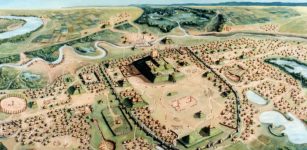 Story About Cahokia’s Lost Civilization Is Wrong – Archaeologist Says
Archaeology | Feb 14, 2020
Story About Cahokia’s Lost Civilization Is Wrong – Archaeologist Says
Archaeology | Feb 14, 2020 -
 Nimerigar: Mythological Race Of Little People Living In Wyoming
Featured Stories | Jun 7, 2017
Nimerigar: Mythological Race Of Little People Living In Wyoming
Featured Stories | Jun 7, 2017 -
 Submerged Wreck Of Mayan Slave Ship Identified By INAH Researchers
Archaeology | Sep 23, 2020
Submerged Wreck Of Mayan Slave Ship Identified By INAH Researchers
Archaeology | Sep 23, 2020 -
 Stunning Swiss Stonehenge Discovered Underwater
Archaeology | Nov 4, 2019
Stunning Swiss Stonehenge Discovered Underwater
Archaeology | Nov 4, 2019 -
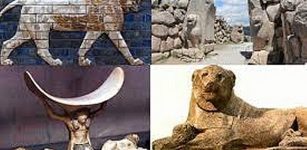 The Majestic Lion: Ancient Symbol Of Power And Royalty Found World-Wide
Ancient Symbols | Oct 10, 2017
The Majestic Lion: Ancient Symbol Of Power And Royalty Found World-Wide
Ancient Symbols | Oct 10, 2017 -
 Never-Before-Seen Amazon Rock Art Reveal People Lived With Giant Ice Age Animals
Archaeology | Dec 5, 2020
Never-Before-Seen Amazon Rock Art Reveal People Lived With Giant Ice Age Animals
Archaeology | Dec 5, 2020 -
 Goblins: Antisocial, Grotesque, Ugly And Vengeful Fairy Creatures In Ancient Beliefs
Featured Stories | Dec 6, 2018
Goblins: Antisocial, Grotesque, Ugly And Vengeful Fairy Creatures In Ancient Beliefs
Featured Stories | Dec 6, 2018 -
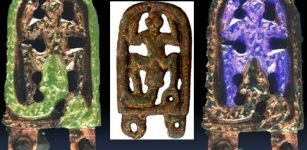 Unique Medieval Bronze Buckle Of A Snake Devouring A Frog-Like Creature Found In Brno, Czech Republic
Archaeology | Dec 13, 2023
Unique Medieval Bronze Buckle Of A Snake Devouring A Frog-Like Creature Found In Brno, Czech Republic
Archaeology | Dec 13, 2023 -
 Great Serpent Mound Of Ohio: Most Famous Ancient Earthwork Of North America
Civilizations | Mar 17, 2014
Great Serpent Mound Of Ohio: Most Famous Ancient Earthwork Of North America
Civilizations | Mar 17, 2014 -
 Underground Civilizations – True Rulers Of Earth – Part 1
Featured Stories | May 7, 2019
Underground Civilizations – True Rulers Of Earth – Part 1
Featured Stories | May 7, 2019 -
 Unravelling The Mystery Of Apollonius Of Tyana – Was He A Superhuman?
Featured Stories | Sep 17, 2015
Unravelling The Mystery Of Apollonius Of Tyana – Was He A Superhuman?
Featured Stories | Sep 17, 2015 -
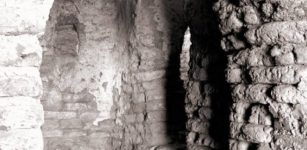 900-Year-Old Crypt At Old Dongola: Magical Inscriptions And Mysterious Signs Found
Archaeology | Sep 12, 2015
900-Year-Old Crypt At Old Dongola: Magical Inscriptions And Mysterious Signs Found
Archaeology | Sep 12, 2015 -
 Unique Sword Casts New Light On Viking Voyages Across The North Sea
Archaeology | Jul 18, 2022
Unique Sword Casts New Light On Viking Voyages Across The North Sea
Archaeology | Jul 18, 2022 -
 What Was The Law Of The Innocents?
Ancient History Facts | Feb 10, 2016
What Was The Law Of The Innocents?
Ancient History Facts | Feb 10, 2016 -
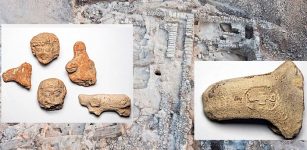 Kingdom Of Judah: Government Complex And 120 Seal Impressions Stamped On Jars – Unearthed
Archaeology | Jul 23, 2020
Kingdom Of Judah: Government Complex And 120 Seal Impressions Stamped On Jars – Unearthed
Archaeology | Jul 23, 2020

